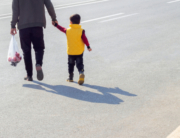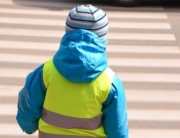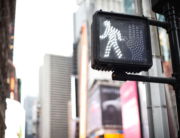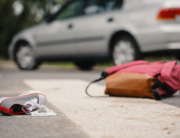Every pedestrian accident case is different with a unique set of facts. Therefore we cannot tell you the value of your claim without meeting with you. However, we can provide guidance about what goes into the determination of damages and how multiple factors can impact how much compensation you are likely to receive.
Determining Legal Liability in a Pedestrian Accident
You can only get compensation from people who are liable for your injuries. The law uses a four-step process to determine if someone is responsible for your damages.
Legal Duty
The person against whom you make your claim must have a legal duty toward you. Let’s say that a car hit you while you were crossing the street. The driver of the vehicle must operate his or her vehicle with caution and keep a proper look-out.
Breach of Duty
Breach of Duty is also known as negligence. If the driver was intoxicated when they hit you, this person breached their duty to operate her vehicle with caution. Driving while under the influence of alcohol is an example of negligence.
Causation
The negligence must be the factor that caused the accident. For example, if the driver could not stop in time because her brakes failed, and she still would have hit you had she been sober, her negligent intoxication would not satisfy the “causation” requirement. But in this case, let’s say that she passed out from her alcohol consumption right before driving into the crosswalk and hitting you. Her negligence was the cause of the accident.
Damages. We must also establish a link between the negligence and your injuries. The drunk driver is liable for the injuries you suffer from her car striking you. The harm to you was a direct result of her driving while under the influence.
Damages You Can Claim in a Pedestrian Accident
Pedestrians are entitled to receive the same kinds of damages as plaintiffs in any other type of personal injury claim. The value of your injury claim induces:
Medical Expenses
We will gather the records and bills for all services needed because of the crash including but not limited to:
- Emergency room or hospital
- Surgery
- Treatments and procedures
- Prescription drugs
- Rehabilitation center
Lost Wages
We will get records from your employer to show the amount of income you lost as a result of the accident and your medical treatment.
Decreased earning potential
Pedestrian injuries can be life-changing. If you cannot perform your previous job, have to reduce your hours or take a different career path; you can seek damages for that loss. Decreased earning potential can have a ripple effect. In addition to losing the income, you might also end up with less money in your retirement account and fewer benefits than you would have enjoyed otherwise. We often call in vocational experts to help calculate these damages.
Long-term Care
Depending on the extent of your injuries and recuperation, you might need long-term medical care or personal assistance. We will use the expertise of specialists to determine the value of your long-term care damages.
Pain and Suffering
You should get some compensation for what you endured because of getting injured. The mere payment of your out-of-pocket losses does not address your pain and suffering. The purpose of this category of damages is to give you fair compensation for what you went through as a result of the accident.
Disfigurement
If you make a 100 percent recuperation and do not have to live with enduring reminders of the crash, like scars, then you will not have a claim for disfigurement. On the other hand, if you have to walk around with extensive scarring, particularly on highly-visible locations, such as your face, chest, or arms, you should get compensation.
Loss of consortium
Severe injuries can take their toll on your close, intimate relationships. If your relationship with your significant other suffered as a result of your injuries, your significant other might have a claim for what they lost in the process, called loss of consortium.
Loss of enjoyment of life
When a victim recuperates as much as the treatment team expects, and is no longer able to engage in activities that brought them joy, such as walking or communicating, he or she might lose some of their happiness in life. This is compensable damage that we will explore in appropriate cases.
How Proportion of Fault Can Impact Compensation
Despite what many people think, pedestrians do not always have the right of way. Motor vehicles should make every reasonable effort to avoid hitting walkers, but the pedestrian can bear some responsibility if he or she:
- Did not obey traffic lights or signals, including “Walk/Do Not Walk” lighted signals
- Jaywalked
- Crossed an intersection diagonally, unless explicitly allowed
- Walked in the street instead of on a usable sidewalk
- Engaged in reckless conduct on or near the street
- Crossed on the street instead of using a pedestrian crossing
- Stepped or ran into the path of a vehicle that did not have time to stop
People operating motor vehicles must keep a look-out for walkers and exercise caution to avoid striking them. Drivers have to be more careful than usual around children or “obviously confused or incapacitated” walkers.
Comparative Negligence
Florida uses the doctrine of comparative negligence, which means that even if you were partly at fault, you could recover some compensation if someone else was also negligent. The law will adjust the amount of money you get by the proportion of your responsibility.
For example, if you had damages of $100,000 and you were ten percent at fault, you will get $90,000. Your ten percent fault will reduce your $100,000 damages by ten percent, which is $10,000, which leaves you with $90,000.
Filing a claim can seem confusing and overwhelming. If you contact the Montero Law Center, we will set up a consultation and case evaluation at no charge to you. Please call us at 1-954-767-6500 today so we can help you fight for the compensation you deserve.
 English
English  Español
Español 



